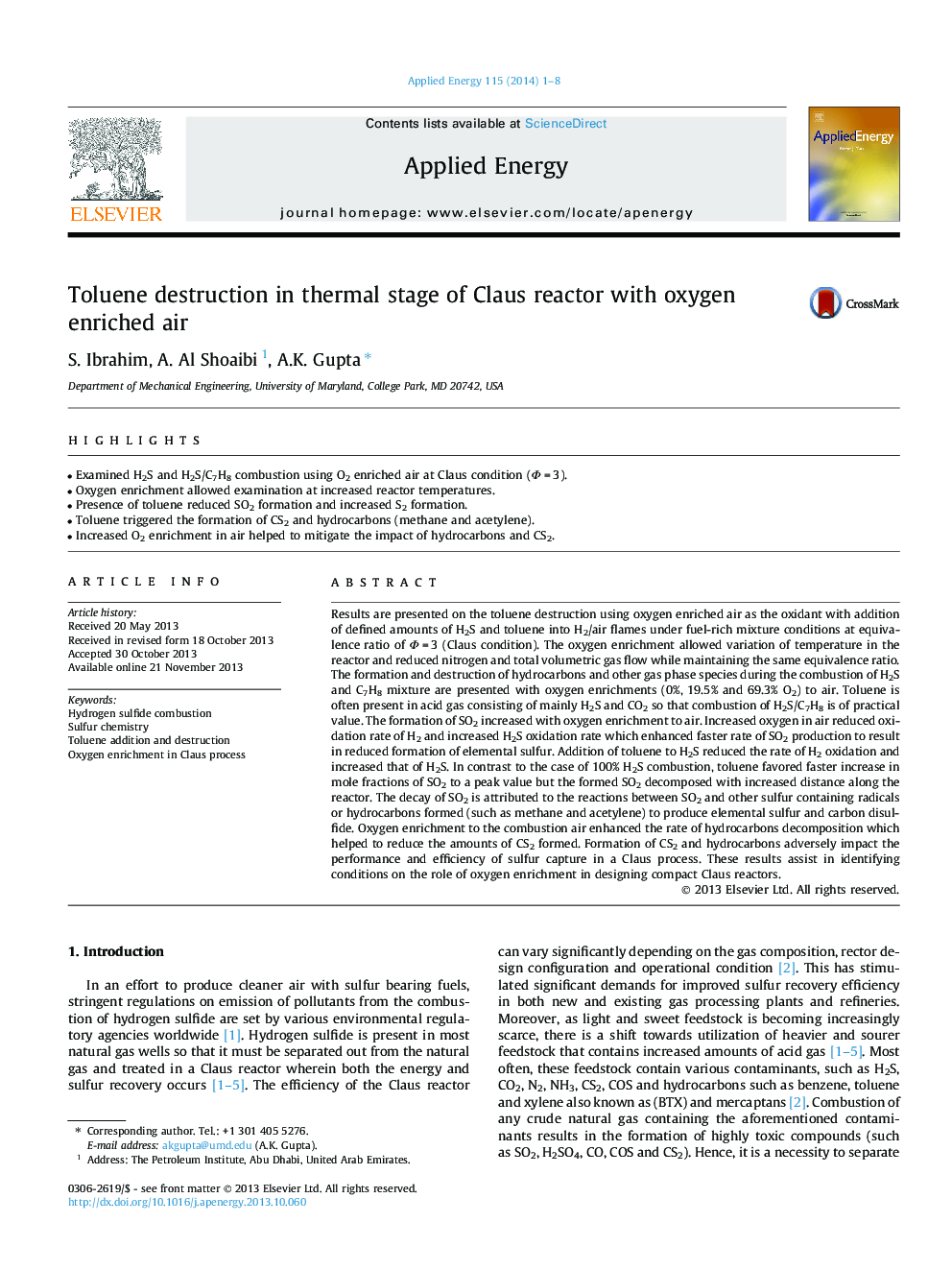| Article ID | Journal | Published Year | Pages | File Type |
|---|---|---|---|---|
| 6691189 | Applied Energy | 2014 | 8 Pages |
Abstract
Results are presented on the toluene destruction using oxygen enriched air as the oxidant with addition of defined amounts of H2S and toluene into H2/air flames under fuel-rich mixture conditions at equivalence ratio of Φ = 3 (Claus condition). The oxygen enrichment allowed variation of temperature in the reactor and reduced nitrogen and total volumetric gas flow while maintaining the same equivalence ratio. The formation and destruction of hydrocarbons and other gas phase species during the combustion of H2S and C7H8 mixture are presented with oxygen enrichments (0%, 19.5% and 69.3% O2) to air. Toluene is often present in acid gas consisting of mainly H2S and CO2 so that combustion of H2S/C7H8 is of practical value. The formation of SO2 increased with oxygen enrichment to air. Increased oxygen in air reduced oxidation rate of H2 and increased H2S oxidation rate which enhanced faster rate of SO2 production to result in reduced formation of elemental sulfur. Addition of toluene to H2S reduced the rate of H2 oxidation and increased that of H2S. In contrast to the case of 100% H2S combustion, toluene favored faster increase in mole fractions of SO2 to a peak value but the formed SO2 decomposed with increased distance along the reactor. The decay of SO2 is attributed to the reactions between SO2 and other sulfur containing radicals or hydrocarbons formed (such as methane and acetylene) to produce elemental sulfur and carbon disulfide. Oxygen enrichment to the combustion air enhanced the rate of hydrocarbons decomposition which helped to reduce the amounts of CS2 formed. Formation of CS2 and hydrocarbons adversely impact the performance and efficiency of sulfur capture in a Claus process. These results assist in identifying conditions on the role of oxygen enrichment in designing compact Claus reactors.
Related Topics
Physical Sciences and Engineering
Energy
Energy Engineering and Power Technology
Authors
S. Ibrahim, A. Al Shoaibi, A.K. Gupta,
